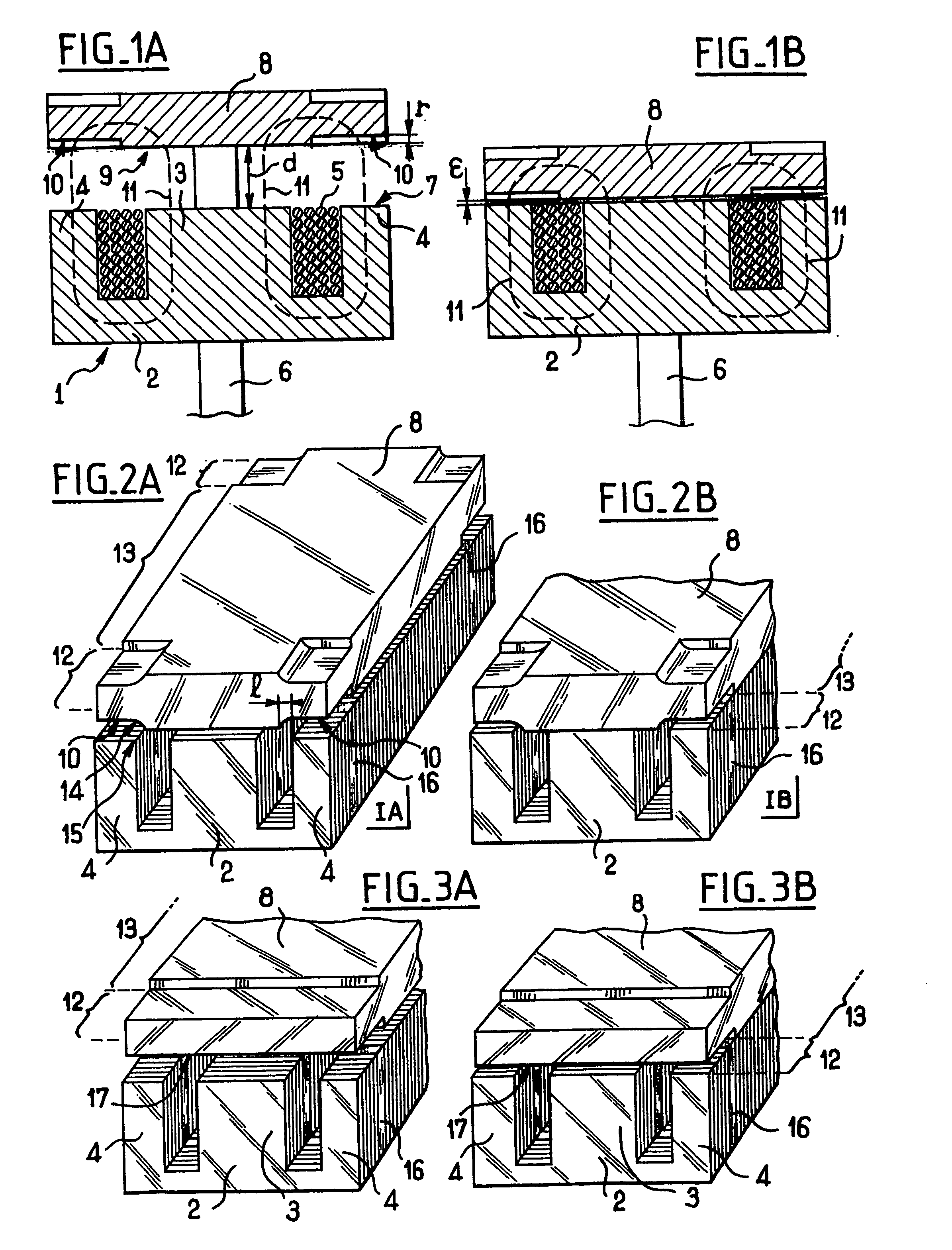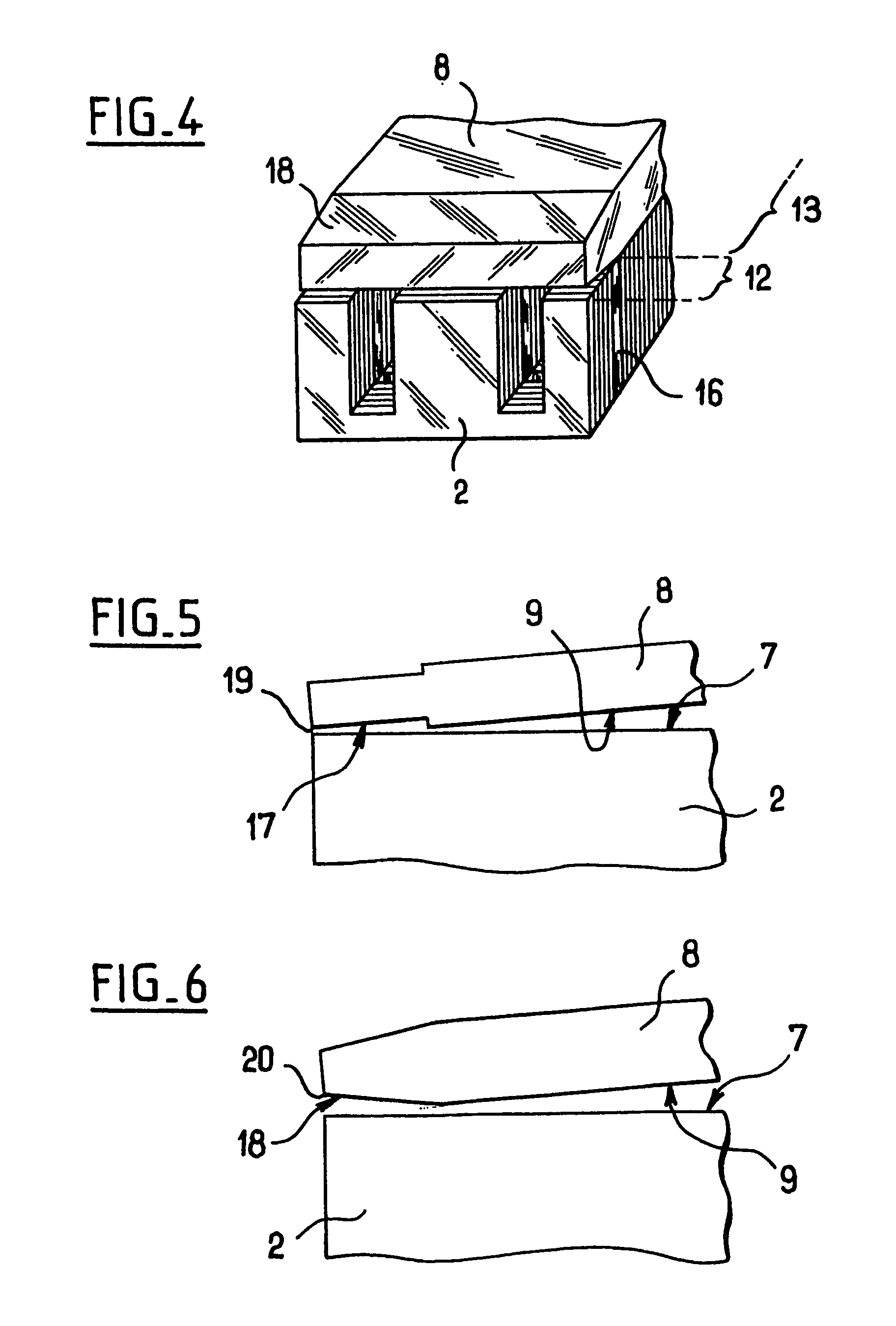Electromagnetic actuator with controlled attraction force
a technology of magnetizing force and actuator, which is applied in the direction of magnetic bodies, electrical devices, cores/yokes, etc., can solve the problems of large setback compared with residual space, and achieve the effect of increasing the total air gap that the flux needs to cross in the first zone, negligible influence on the performance of the actuator, and increasing the total air gap
- Summary
- Abstract
- Description
- Claims
- Application Information
AI Technical Summary
Benefits of technology
Problems solved by technology
Method used
Image
Examples
first embodiment
[0037] In the invention, each of the faces of the armature 8 presents four adaptation portions 10 each set back by a set-back distance r from the face that includes the set-back portion 10 in question. Each of the set-back portions 10 lies facing one of the side branches 4 of the core 2, and the set-back portions are disposed symmetrically about the actuator rod 6.
[0038] In the figures, the set-back portions 10 are shown on both faces of the armature 8 since the armature 8 co-operates in like manner with another coil (not shown) which extends facing the other face of the armature 8. For the purposes of description, only the set-back portions 10 made in the face 9 facing the core are taken into consideration.
[0039] In the position shown in FIG. 1A, the armature 8 is remote from the core 2, and the setback r of the set-back portion 10 is negligible compared with the distance d and measured between the face 9 of the armature 8 and the face 7 of the core 2. The total air gap to be cros...
second embodiment
[0053] In a second embodiment as shown in FIGS. 3A and 3B, the set-back portions are formed by steps 17 which extend transversely facing the central branch 3 and the side branches 4 of the core 2. In this case, the setback of the set-back portion has an effect on the flux not only where it passes between a side branch and the armature, but also where it passes between the central branch and the armature.
[0054] A step 17 is easier to machine than the set-back portions 10 shown in FIGS. 2A and 2B, and it avoids any risk of magnetic flux passing in unwanted manner via the internal edges 15 of the side branches 4.
[0055] The step 17 defines two zones 12 and 13 in the same manner as in the above embodiment. In the zone 12 corresponding to the step 17 and in order to be looped, the flux needs to cross the setback r of the step 17 once in the air gap corresponding to the central branch 3 and once again in the air gap with one or other of the side branches. For a reduction in the force of a...
PUM
| Property | Measurement | Unit |
|---|---|---|
| set-back distance | aaaaa | aaaaa |
| magnetic flux | aaaaa | aaaaa |
| magnetic | aaaaa | aaaaa |
Abstract
Description
Claims
Application Information
 Login to View More
Login to View More - R&D
- Intellectual Property
- Life Sciences
- Materials
- Tech Scout
- Unparalleled Data Quality
- Higher Quality Content
- 60% Fewer Hallucinations
Browse by: Latest US Patents, China's latest patents, Technical Efficacy Thesaurus, Application Domain, Technology Topic, Popular Technical Reports.
© 2025 PatSnap. All rights reserved.Legal|Privacy policy|Modern Slavery Act Transparency Statement|Sitemap|About US| Contact US: help@patsnap.com



